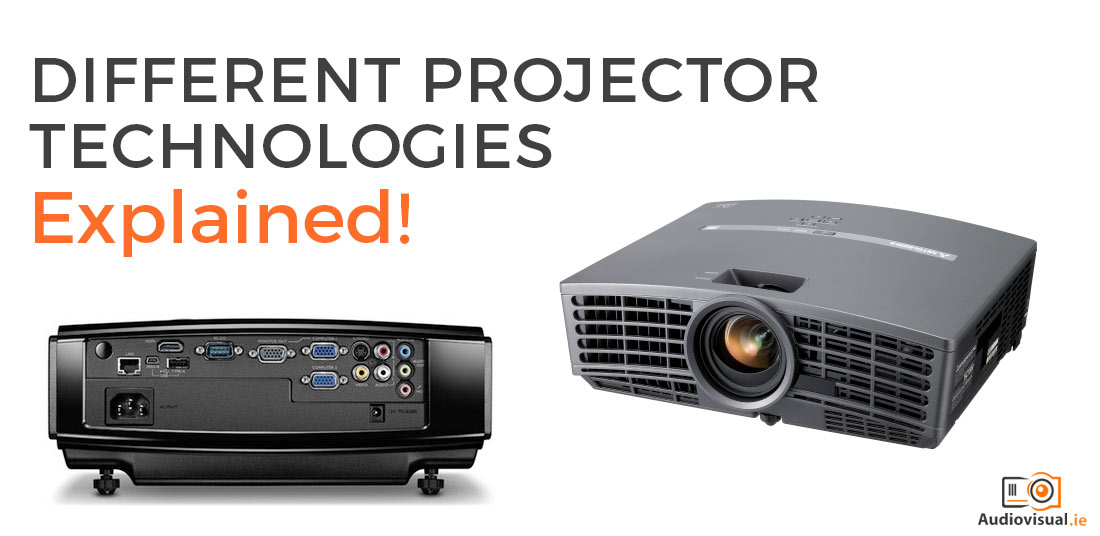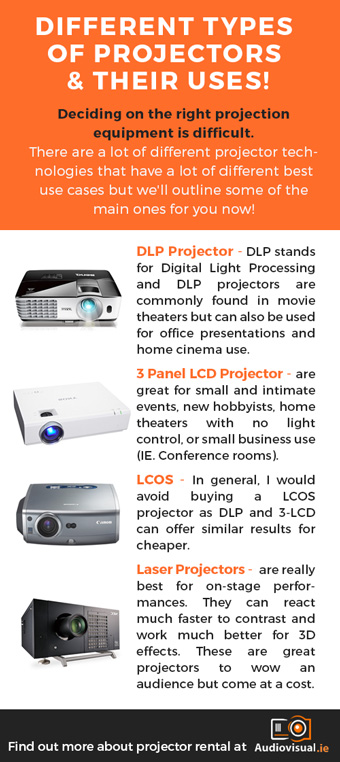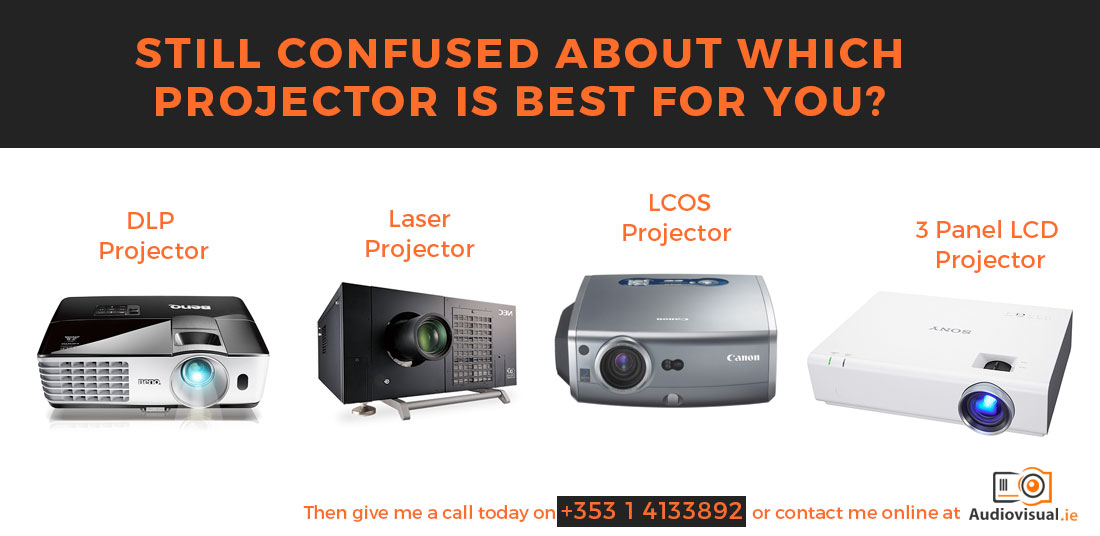
03 Feb Different Projector Technologies Explained!
Deciding on the right projection equipment is difficult. There are a lot of different projector technologies that have a lot of different best use cases. I would really recommend talking to a professional and explaining what you need a projector for, especially if only renting a projector for a special event. Nonetheless, it is nice to have a little background information before you jump into the deep ocean of projection technologies. We touched on this before in our guide to projector rental but will give you more info about the actual projectors now.
So, let’s break this down. Projectors came in a few different varieties; DLP, 3 panel LCD, LCOS, and laser projectors. Let’s talk about each one, briefly describe what they are and give a general use case for each.
DLP Projector
 DLP stands for Digital Light Processing. Essentially, DLP projectors shine a light on a ‘digital’ mirror that has thousands of reflectors that can flip on or off. Those little mirrors reflect the light that creates an image. This reflected image is blasted through a color wheel that spins insanely fast. That color wheel is what give the image its color. The image from the projector is displayed on a screen in pieces. Our brains combine those pieces to make a nice image. Higher-end DLP projectors have three of these mirror arrays and color wheels for each primary color to make an even better image.
DLP stands for Digital Light Processing. Essentially, DLP projectors shine a light on a ‘digital’ mirror that has thousands of reflectors that can flip on or off. Those little mirrors reflect the light that creates an image. This reflected image is blasted through a color wheel that spins insanely fast. That color wheel is what give the image its color. The image from the projector is displayed on a screen in pieces. Our brains combine those pieces to make a nice image. Higher-end DLP projectors have three of these mirror arrays and color wheels for each primary color to make an even better image.
DLP projectors are commonly found in movie theaters. They can be manufactured to handle a wide variety of use cases. Typically, they produce a dimmer image and have poor contrast ratios, but they can also produce a really crisp and clean image. DLP projectors will range in price from a few hundred Euro to thousands of Euro. Single chip DLP projectors also have absolutely no convergence issues but can produce more rainbow effects.
DLP projectors are manufactured for specific use cases. Some work much better for office presentations while others work much better home theater use. Consult with a professional about different DLP models as they can vary heavily.
3 Panel LCD Projector
3 Panel LCD (or 3-LCD) displays work exactly like TVs. These types of projectors take an LCD panel for each primary color, combine the image of all three, and display it on a screen. 3-LCD displays can have much higher light output than other projectors but do have convergence issues. Because the convergence (lining up the image from all three LCD panels) can be off, the picture can be a little fuzzier, or just off altogether. The contrast ratio is much better than DLP projectors but motion blur can be much worse. 3-LCD projectors are the oldest of the technologies used, and as such, can be much cheaper than other projectors.
3-LCD projectors can be a good starter projector, or cheap and compact projector, but may not work as well for movies or video games. 3-LCD projectors are great for small and intimate events, new hobbyists, home theaters with no light control, or small business use (IE. Conference rooms).
LCOS
I won’t say much about LCOS projectors. They combine the best of both DLP and LCD. They work in a very similar fashion to DLP projectors but stop light reflection in a different way than DLP projectors do. Contrast ratio and the light output are much better than most DLP projectors but the price can also be much more expensive. In general, I would avoid buying a LCOS projector as DLP and 3-LCD can offer similar results for cheaper.
Laser Projectors
Laser projectors are closer to 3-LCD panel projectors with the biggest different being the light source. Laser projectors are the new thing on the block. Manufacturers are still experimenting with different ways to use a laser as a light source. For instance, some technologies use two lasers, one for the blue light and a second that is forced through phosphors and split into other colors. I’m wholly convinced that laser projectors will eventually take over the entire market as they can be much cheaper to produce long term, have almost four times the ‘bulb’ life, produce a higher resolution, and have far fewer convergence issues. Still, they are new and are very expensive and currently have a comparable contrast ratio and light output as 3-LCD and LCOS projectors.
Right now, laser projectors are really best for on-stage performances. They can react much faster to contrast and work much better for 3D effects. These are great projectors to wow an audience but come at a cost.

Questions About Different Projector Technologies?
I hope the above overview of the main types of projector technologies has given you an idea about which projector may suit your needs best but if you’ve any questions feel free to comment below. If you’re looking to rent some AV gear or want to talk to an AV expert then call us on +353 1 4133892, contact us online or email me directly ivan@audiovisual.ie and be happy to help.



Pingback:Possible Projector Rental Issues That You Need To Know
Posted at 17:52h, 29 August[…] Most projectors still use a traditional bulb and not a laser or LED light source (check out some different projector technologies here). Halogen lights don’t take kindly to being knocked around. Neither do the LCD panels or […]